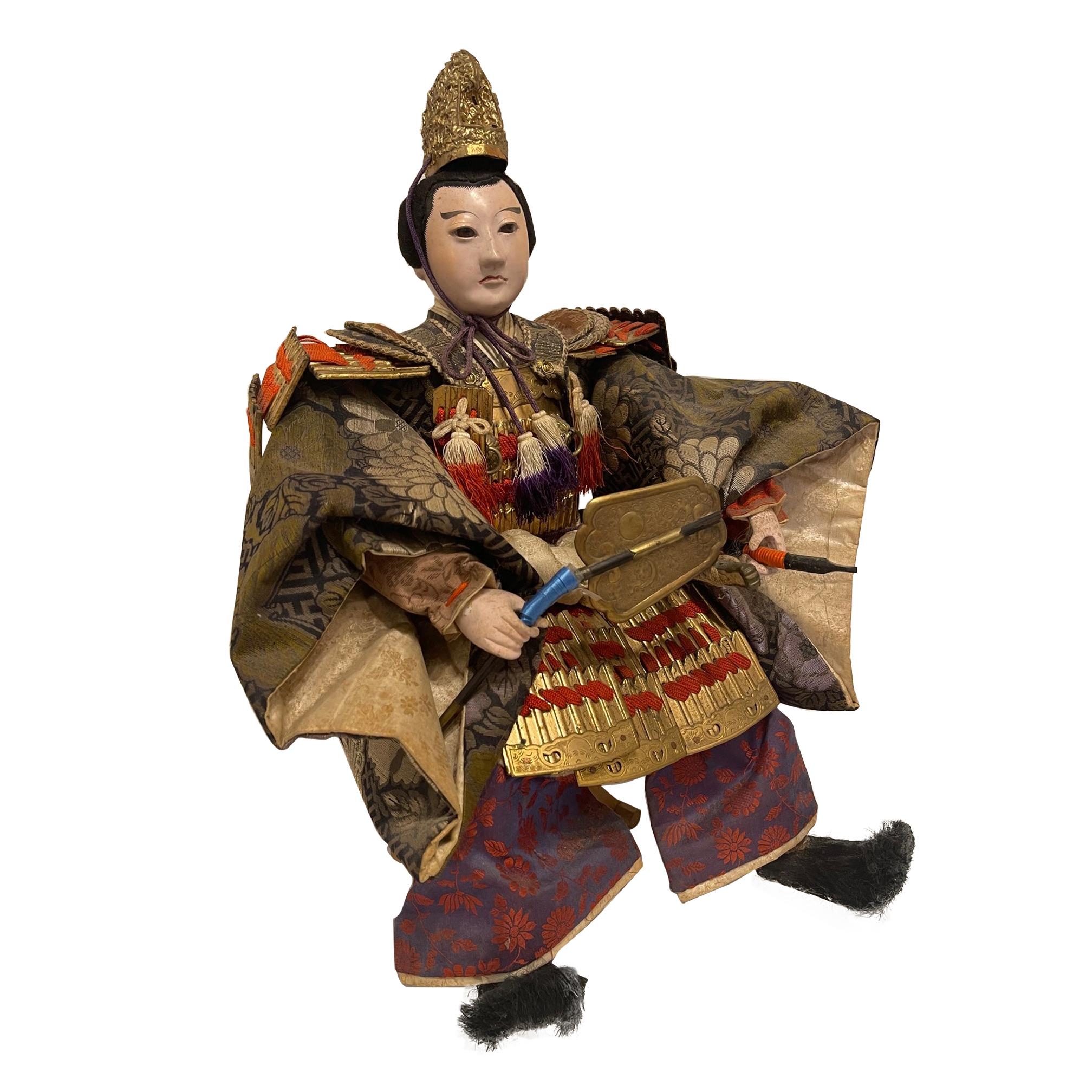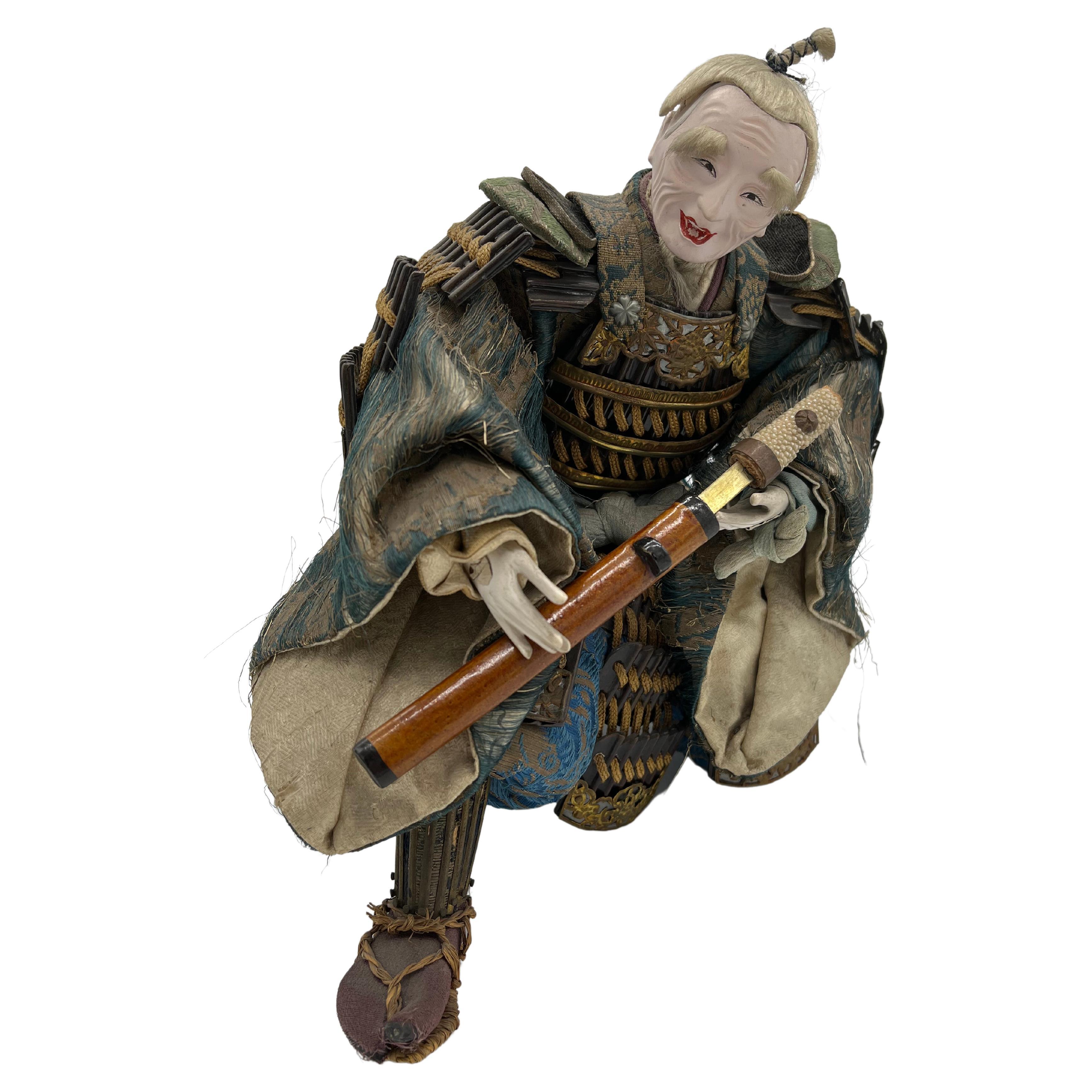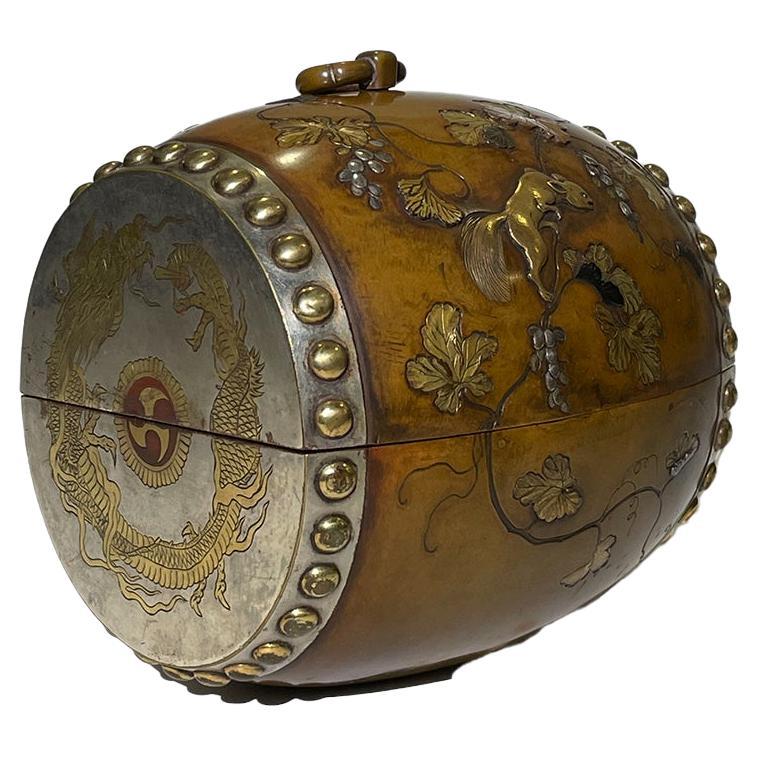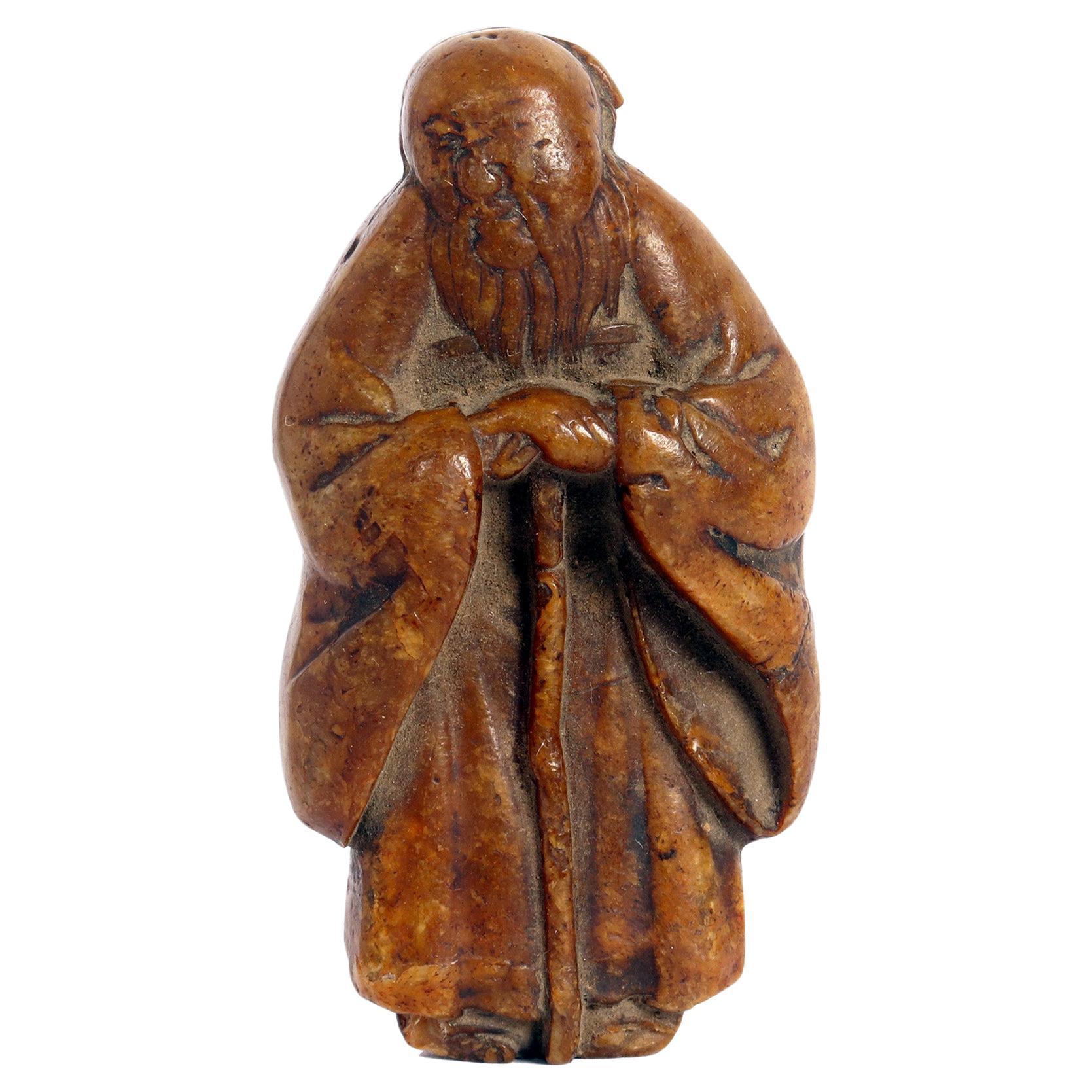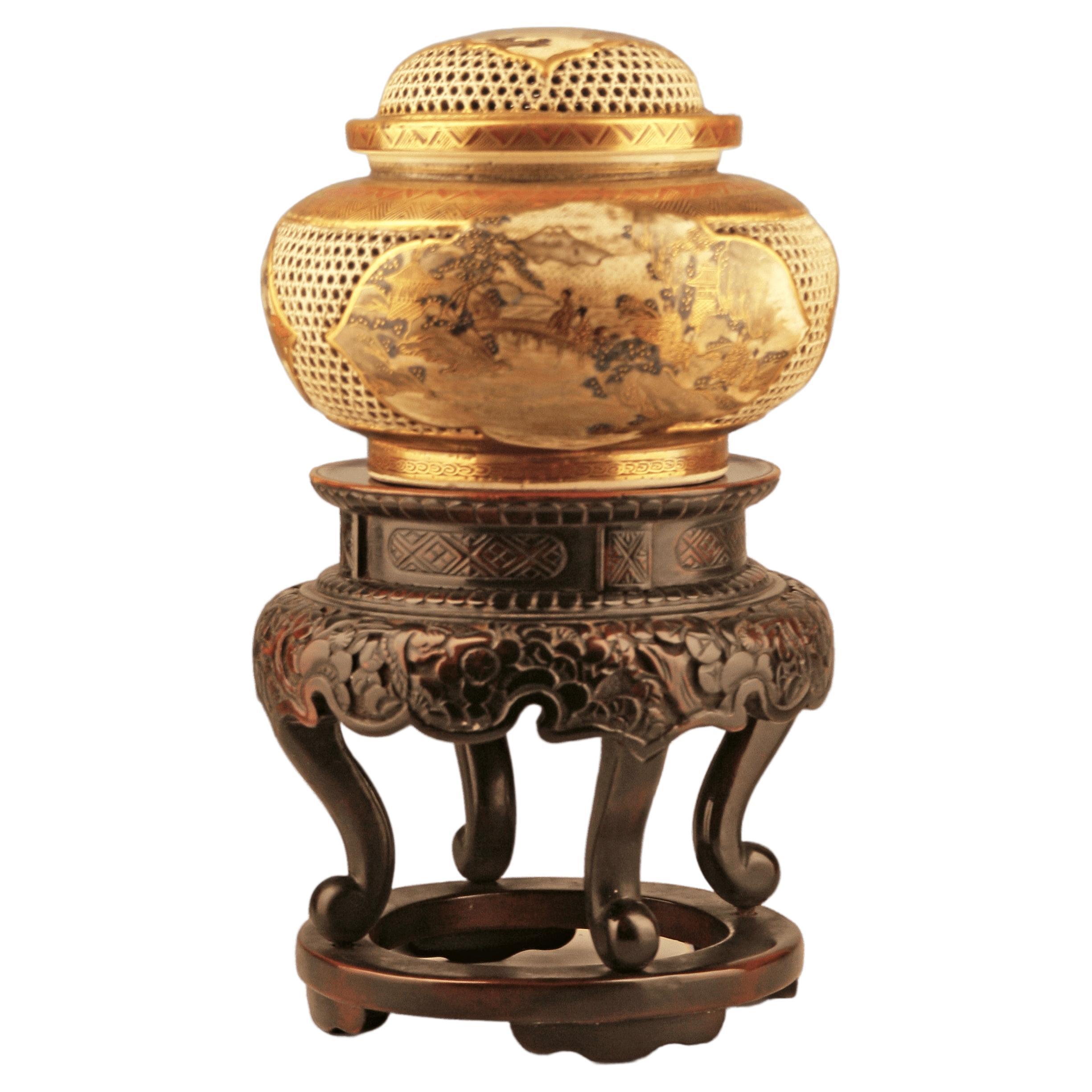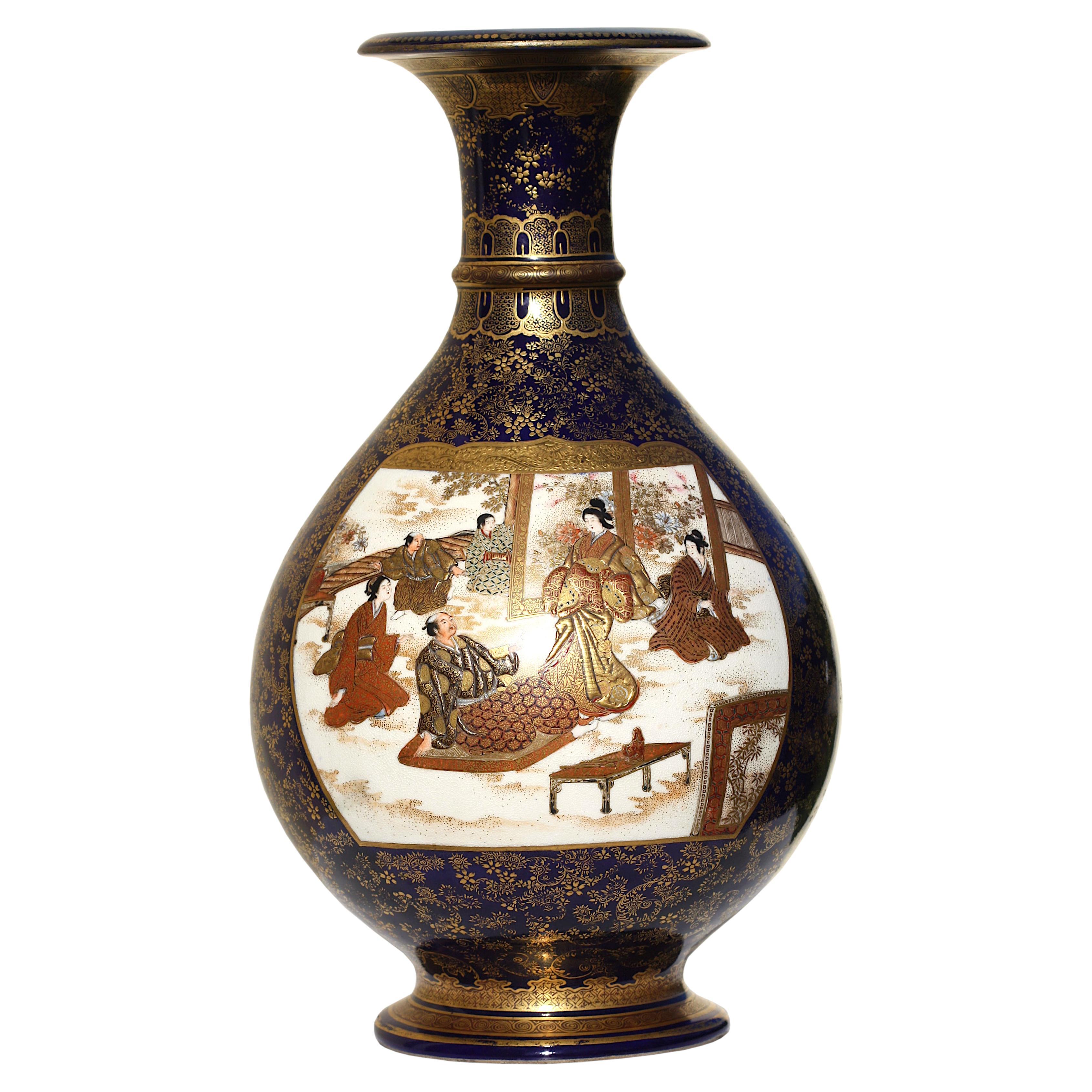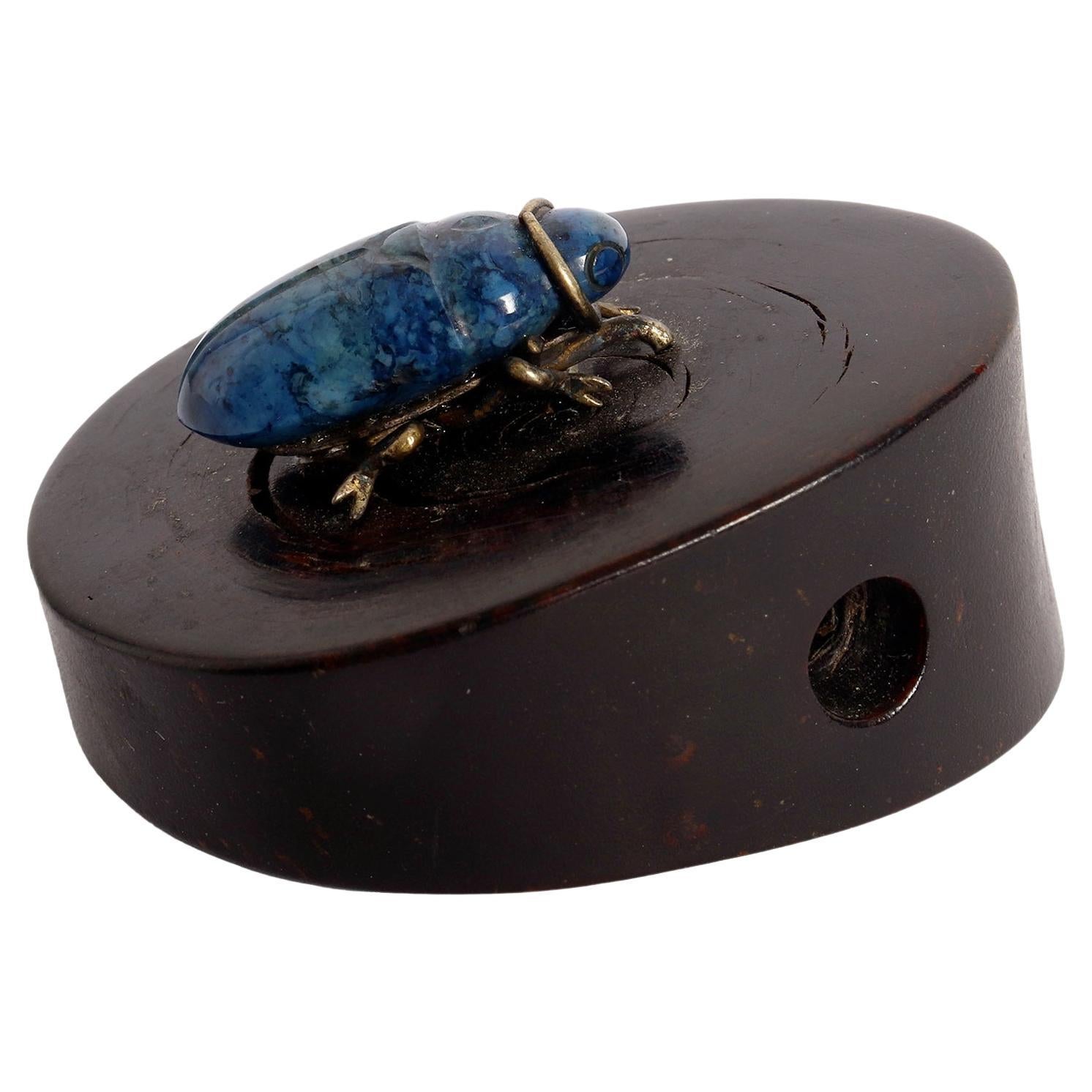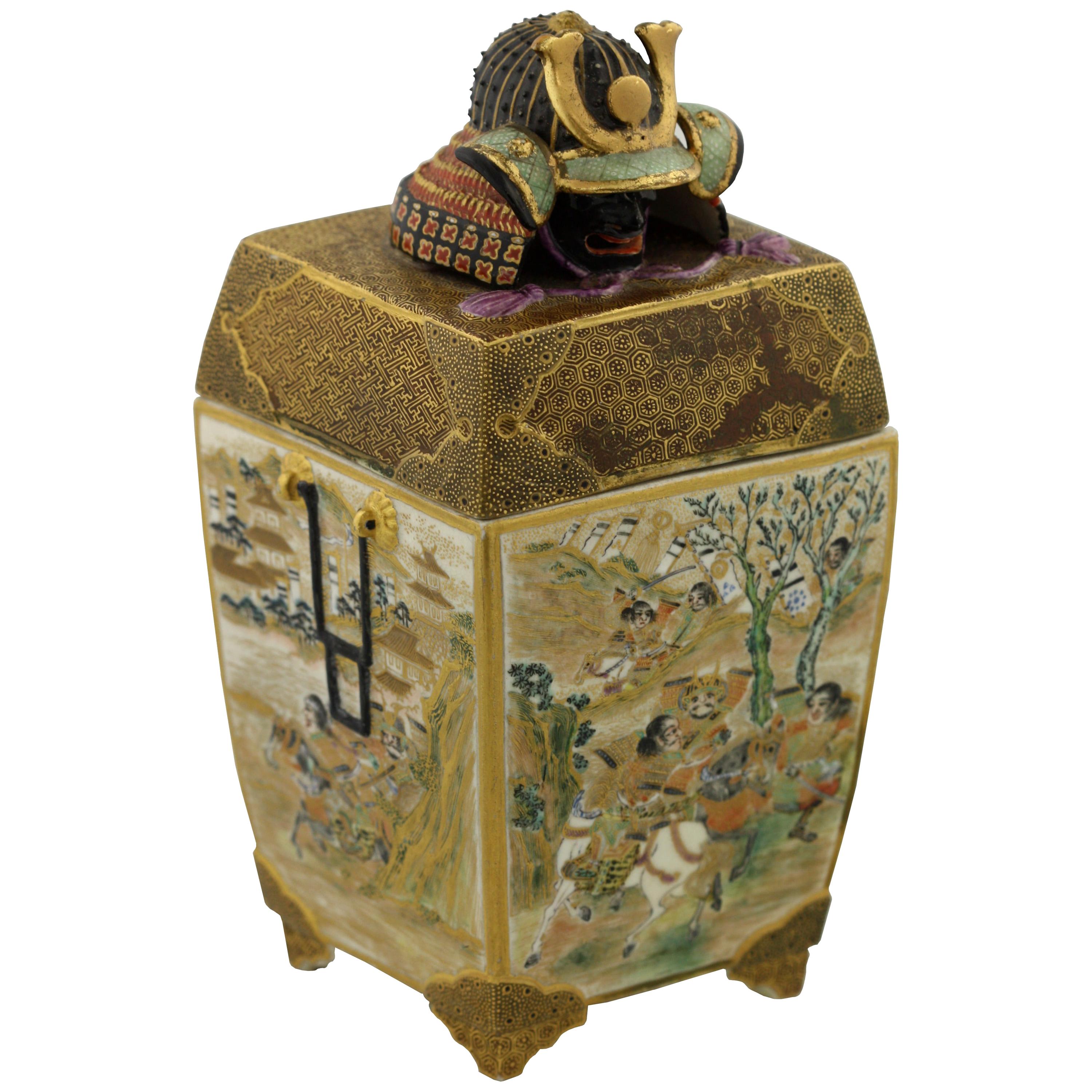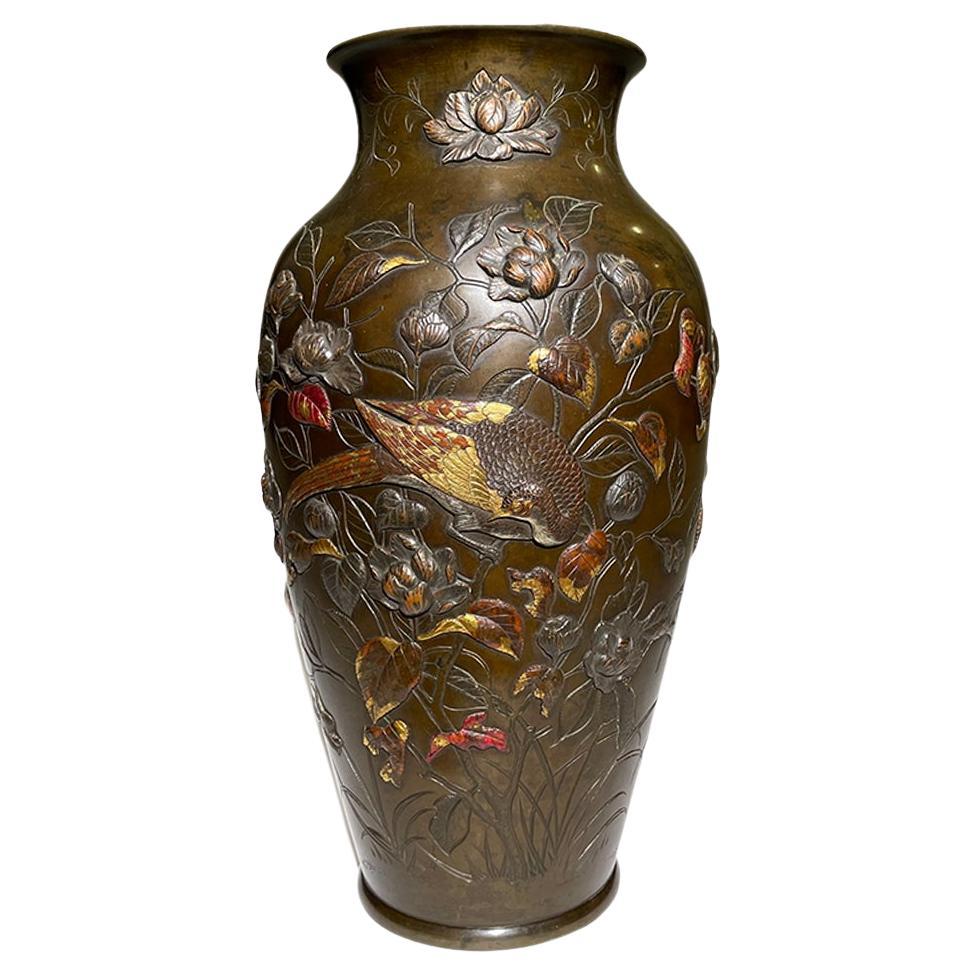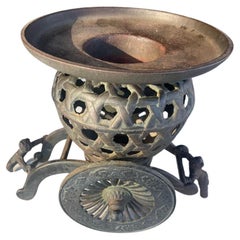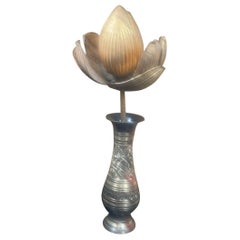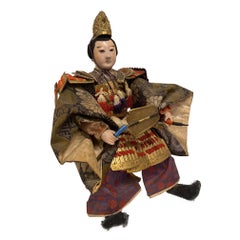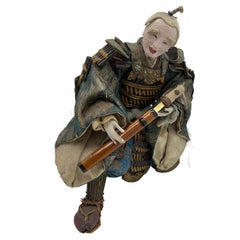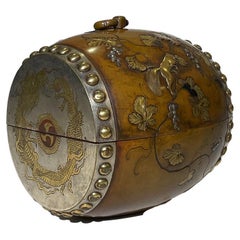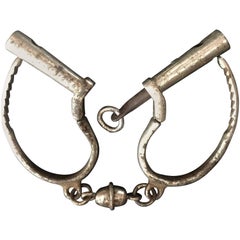
Japanese Antique Samurai Handcuffs, Meiji Period
View Similar Items
Want more images or videos?
Request additional images or videos from the seller
1 of 9
Japanese Antique Samurai Handcuffs, Meiji Period
About the Item
- Dimensions:Height: 3.5 in (8.89 cm)Width: 9 in (22.86 cm)Depth: 0.75 in (1.91 cm)
- Style:Edo (Of the Period)
- Materials and Techniques:
- Place of Origin:
- Period:
- Date of Manufacture:19th Century
- Condition:Wear consistent with age and use.
- Seller Location:South Burlington, VT
- Reference Number:1stDibs: LU128929427803
About the Seller
5.0
Gold Seller
These expertly vetted sellers are highly rated and consistently exceed customer expectations.
Established in 1990
1stDibs seller since 2015
2,214 sales on 1stDibs
Typical response time: 1 hour
More From This SellerView All
- Japanese Pair Antique Garden Cart Planters Children, Meiji PeriodLocated in South Burlington, VTA rare pair (2) of 19th century hard to find Japanese Usubata Flower Planter Carts "Norimono", Late Meiji Period. Japan, this handsome quality ol...Category
Antique Late 19th Century Japanese Meiji Garden Ornaments
MaterialsIron
- Japan Early Ikebana Planter Garden Cart with Children, Meiji PeriodLocated in South Burlington, VTA rare 19th century hard to find Japanese Usubata Flower Planter Cart "Norimono", Late Meiji Period. Japan, this handsome quality old style "garden cart" ikebana planter is an exceptionally rare find and an authentic old work of Japanese art. Brilliantly designed and a handsome plant presentation with removable ikebana vase inserted into an openwork wicker basket set on a wheeled cart...Category
Antique Late 19th Century Japanese Meiji Garden Ornaments
MaterialsIron
- Japanese Fine Antique Gilt Lotus Bud Flower, Edo Period 19th CenturyLocated in South Burlington, VTFrom our recent Japanese acquisitions, a rare find, stem #3 Antique Original Japanese temple "blossominig lotus" flower bud stem. This finely hand carved wood and lacquered gold flower stem was made for a Buddhist 19th century temple altar...Category
Antique 1840s Japanese Edo Sculptures and Carvings
MaterialsWood
$450 Sale Price43% Off - Japanese Fine Antique Gilt and Red Lacquer Lotus Bud Flower, Edo Period 19th CLocated in South Burlington, VTFrom our recent Japanese acquisitions, a rare find Antique Original Japanese temple "blossoming lotus" flower bud stem including its original red lacquer display base. This finely hand carved wood and lacquered gold flower stem was made for a Buddhist 19th century temple altar. Its flower blossoms and leaves symbolize the stages of the path toward enlightenment. The individual parts of each lotus is carved separately then joined in an arrangement and inserted in altar vessels. Also called "Jyôka" , it is placed on or next to an altar in a Buddhist temple. Made with meticulous techniques. In Buddhism, the lotus is an important symbol of divine enlightenment because it blooms into beautiful flowers while growing in mud. Tsunehana means "a flower that continues to bloom forever" and "a flower that does not wither." For this reason, the flowers represented are in different stages of their life, unfolded lotus leaves, buds and full flowers, thus symbolizing the journey towards Buddhist enlightenment. This lovely Japanese antique gilt Lotus flower is an early survivor, circa 1840, and a hard to find treasure that was originally placed on or around a temple altar. This ensemble consists of a single stem, the top most flower, and the bottom leaf- all mounted in the original square red lacquer display base. A gold gilt 3.5 inch long tortoise "minogame" is affixed to the base as seen in the photo. Its attractive original old patina coupled with much of the original gilding remaining present is just the way we like to find them. Dimensions: With original red lacquer display stand Height, 17 inches height and 9 inches in width. The lotus flower stem alone measures 16 inches in height. Provenance: acquired from a Kyoto Japanse monk and collector History of the Japanese turtle "minogame" One of the most famous is the mythological giant turtle...Category
Antique 1840s Japanese Edo Sculptures and Carvings
MaterialsWood
- Chinese Ancient Hand Carved UnicornLocated in South Burlington, VTA Chinese hand carved and hand painted wooden effigy of an extraordinary unicorn dating to the Song dynasty before 1279 AD. Please enjoy the beautiful remnants of its aged original ...Category
Antique 15th Century and Earlier Chinese Antiquities
MaterialsWood
$2,200 Sale Price87% Off - Ancient China Monumental Stone Ram Han Dynasty, 206BC-220ADLocated in South Burlington, VTChina, a large votive model of a stone ram, Han dynasty (206BC-220AD) Dimensions: 45cm, 18 inches high and 65cm, 26 inches length and 25cm, 10 inches wi...Category
Antique 15th Century and Earlier Chinese Han Sculptures and Carvings
MaterialsLimestone
You May Also Like
- Japanese Samurai Doll or Figure, Meiji Period, Circa 1830Located in Savannah, GAJapanese Samurai Doll or Figure, Meiji Period, circa 1830. Skirt purple and red colors.Category
Antique Early 19th Century Japanese Meiji Antiquities
MaterialsPorcelain
- Japanese Samurai Figure Hinaningyo, Edo PeriodLocated in Munich, BavariaAntique samurai doll called Hinaningyo; Japan, late EDO period Praised at the Tang-no-sekku boys' festival on May 5th as a sign of bravery, embodying the...Category
Antique Mid-18th Century Japanese Antiquities
MaterialsTextile, Wood
- Japanese Antique Drum-Shaped Bronze Box, Meiji PeriodLocated in Chuo-ku, TokyoAn excellent work of metalwork inlay in the Meiji era. It's shaped in a traditional Japanese drum. The grape motif is expressed by "takaniku-zougan...Category
Antique 19th Century Japanese Meiji Antiquities
MaterialsBronze
- Japanese Antique Katana Tansu / Paper Pasted Drawer / Meiji Period WabiSabiLocated in Iwate-gun Shizukuishi-cho, Iwate PrefectureThis is an old box for storing Japanese swords called "Katana Tansu". It seems to be around the Edo period to the Meiji period. Paulownia is used as a material, and a number of Jap...Category
Antique Late 19th Century Japanese Meiji Antiquities
MaterialsWood, Paper
- Amber Netske, Japan, Meiji Period, Around 1870Located in Milan, ITAmber Netske, depicting an old man leaning on a stick. Long beard, rich dress with waistband and hair gathered at the nape of the neck. Japan, beginning Meiji Period (1867-1912).Category
Antique Late 19th Century Japanese Antiquities
MaterialsResin
- Japanese Edo-Meiji Period Satsuma Incense Burner (Koro) and Wooden Support TableLocated in North Miami, FLJapanese 19th century Edo-Meiji Period Satsuma stoneware incense burner (Koro) with small wooden support table By: unknown Material: ceramic, stoneware, wood, enamel, paint Techniqu...Category
Antique 19th Century Japanese Edo Antiquities
MaterialsEnamel
